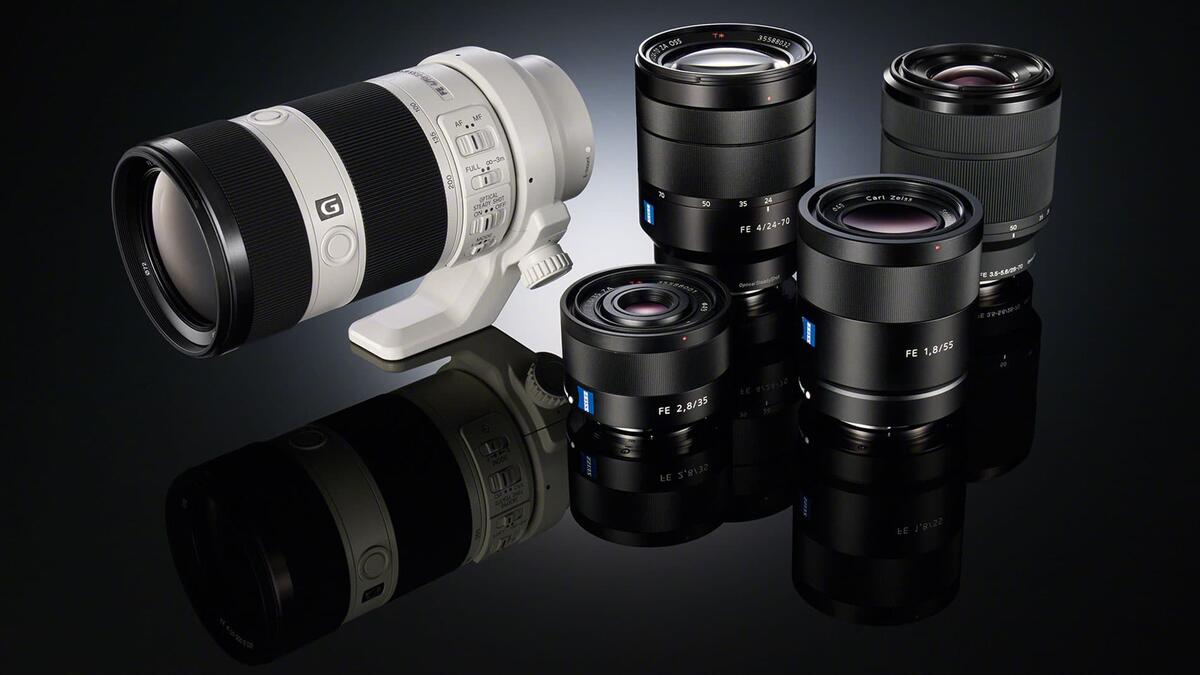Sony Lens Abbreviations and Meanings. Sony is one of the largest lens manufacturers in the world. Like any other lenses, you’ll find letters and numbers adorning them. These abbreviations let you know the features of each lens. These include special lens elements, coatings, features that remove camera shake and more.
What do these mean? In this article, we’ll talk about the most popular abbreviations used with Sony lenses. We can see some common abbreviations even though the use of lens terms differs according to the manufacturer.
Before going into details about Sony lens abbreviations, it is worth noting that the company has a very special relationship with the legendary German lens manufacturer Carl Zeiss. Zeiss manufactures lenses for both Sony’s mounting systems and Sony, Zeiss branded lenses. Although it seems a little confusing, we can summarize it as follows. Zeiss branded lenses manufactured by Sony use the Zeiss ‘approved’ optical formula and technology, but are made by Sony. Lenses produced by Zeiss for Sony cameras are made directly by Zeiss.
Today we will be looking at Sony’s ‘in-house‘ lenses. So Sony lens abbreviations will include those for modern Sony lenses.
Sony E-mount lenses
Designed to work with compact and mirrorless E-mount cameras, this rich range offers different APS-C and full-frame options. Sony’s APS-C sensor first appeared in the NEX series of mirrorless cameras. In 2010, Sony expanded to include α7 full-frame cameras and E-mount full frame specific lenses. There is no physical difference between APS-C and full-frame E-mount, lenses are designed to resolve different image sizes.
Sony A-mount lenses
Based on decades of lens experience, the A-mount system provides versatility for all of our A-mount and E-mount cameras, such as the popular α77 II and expert-level α99. In 2008, Sony launched the α900 full-frame DSLR. Full-frame A-mount lenses make no distinction in the lens model, so all A-mount lenses with no ‘DT’ in the model name resolve an image the size of a 35mm full frame sensor. Full frame A-mount lenses are compatible with both full frame and APS-C bodies.
Read on to learn more about Sony Lens Abbreviations.
Abbreviations on Sony Lenses – Meaning of Letters
For an example of Sony lens abbreviations, check out the new FE 35mm f/1.4 GM lens in the image above. You can find the terms FE and GM below and see their explanations.
Sony Lens Abbreviations – By Type
- SAL – Sony Autofocus Lens, but perhaps better understood as Sony Alpha Lens as lenses that come with this abbreviation are designed specifically for the A-mount cameras. As with SEL, this abbreviation is only part of Sony’s short product name. For example, the Sony 24-70mm f/2.8 ZA SSM lens is also known as SAL-2470Z.
- DT – stands for “Digital Technology” and specifies lenses that are designed for cameras with APS-C sensors. These lenses do not cover the full 35mm sensor image circle, much like Nikon DX, Canon EF-S and Sigma DC lenses. That said, DT lenses can be mounted on full-frame Sony cameras and used in crop mode effectively turning a full-frame Sony camera into a cropped-sensor camera.
- SEL – specifies Sony autofocus lenses designed for their E-mount mirrorless camera system. As with SAL, this abbreviation is only found in the short product name. For example, the Sony E 16-50mm f/3.5-5.6 PZ SSM lens is also known as SELP1650.
- FE – lenses that cover a 35mm sized sensor and are designed to be used with Sony’s full-frame mirrorless cameras, such as the Sony Alpha A7.
- E – lenses designed for Sony’s mirrorless cameras with APS-C sized sensors, such as the Sony Alpha A6000.
Sony Lens Abbreviations – By Class and Technology
- G – stands for “Gold” and specifies Sony’s best, highest-quality, most expensive professional lenses.
- ZA – Zeiss Alpha, Zeiss branded lenses designed specifically for Sony cameras and, as far as high-quality goes, these are on par with Sony’s G lenses. During my research, I’ve found differing opinions, but as far as I know ZA lenses are not actually designed by Zeiss. Designing and manufacturing these lenses is still up to Sony, but only when the optical design is approved by Zeiss according to their high standards.
- SSM – SuperSonic Motor, Sony’s version of a ring-type ultrasonic motor used for extremely fast and silent AF operations. Minolta A-mount camera bodies released before 2000 do not support SSM and you’d be left with manual focus only, but that’s unlikely to be a problem for most Sony shooters.
- SAM – Smooth Autofocus Motor is built into some of Sony’s lower-end lenses released since 2009. It’s sufficiently speedy and quiet, but not as good as SSM. The addition of SAM also usually indicates that the lens has a plastic build and is from the affordable range. Much like SSM, SAM does not work with pre-2000 Minolta camera bodies and the lens focusing will need to be done manually.
- OSS – Optical SteadyShot means that a particular lens has optical image stabilization. Sony Alpha mount lenses don’t have such a feature because Sony prefers to use sensor-based IS with its DSLR and SLT cameras. However, their mirrorless E-mount system relies on optical image stabilization instead.
- PZ – stands for “Power Zoom” and specifies lenses that have inbuilt motors to operate the optical zoom. Useful for videography for the lens’ ability to zoom smoothly. PZ lenses are also quite compact for their class.
- ED – as with lenses from other manufacturers, stands for Extra-low Dispersion glass elements used in the lens’ optical construction and designed to reduce chromatic aberrations.
Specialized Sony Lens Abbreviations
- TC – as with other manufacturer, stands for Tele Converter and means that this particular lens is designed to increase the focal length (and reduce the maximum aperture) of telephoto lenses.
- Fisheye – Fisheye lenses, as you already probably know, provide extremely wide angles of view (180 degrees is not uncommon). What makes them distinctively different from regular wide-angle lenses is the very strong and unique distortion characteristics. Diagonal fisheye lenses cover the whole frame, whilst circular lenses produce a circular image within the frame.
- Pancake – Sony’s lenses designed with extremely compact size and light weight in mind.
- Macro – as with lenses from all other manufacturers, Macro lenses in Sony lens line-up offer higher-than-average magnification and are designed to work well at close focus distance. It is also worth noting that Sony doesn’t play around with the designation – if the lens is specified as Macro, it can achieve 1:1 magnification.
- STF – Smooth Transition Focus, lenses that employ special APD lens groups that get thicker towards the edges and, because of that, reduce the amount of light passing through. Basically, these lenses are designed to deliver extremely smooth, silky out of focus highlights, but with some trade-offs, chief among which is the lack of autofocus. Also, even though the physical maximum apertures of STF lenses are generally wide, the actual amount of light coming through due to APD lenses is much lower (the difference between lens’ f-stop and t-stop can vary up to one and a half stop of light, meaning an f/2 STF lens would let in approximately as much light as a regular f/3.2-3.5 lens would).
We’ve tried to summarize Sony lens abbreviations and their meanings in three different lists. If the inscriptions on the lens do not make sense to you, you can comment by stating the name of the lens. Thanks for reading.
via Fotopedi

